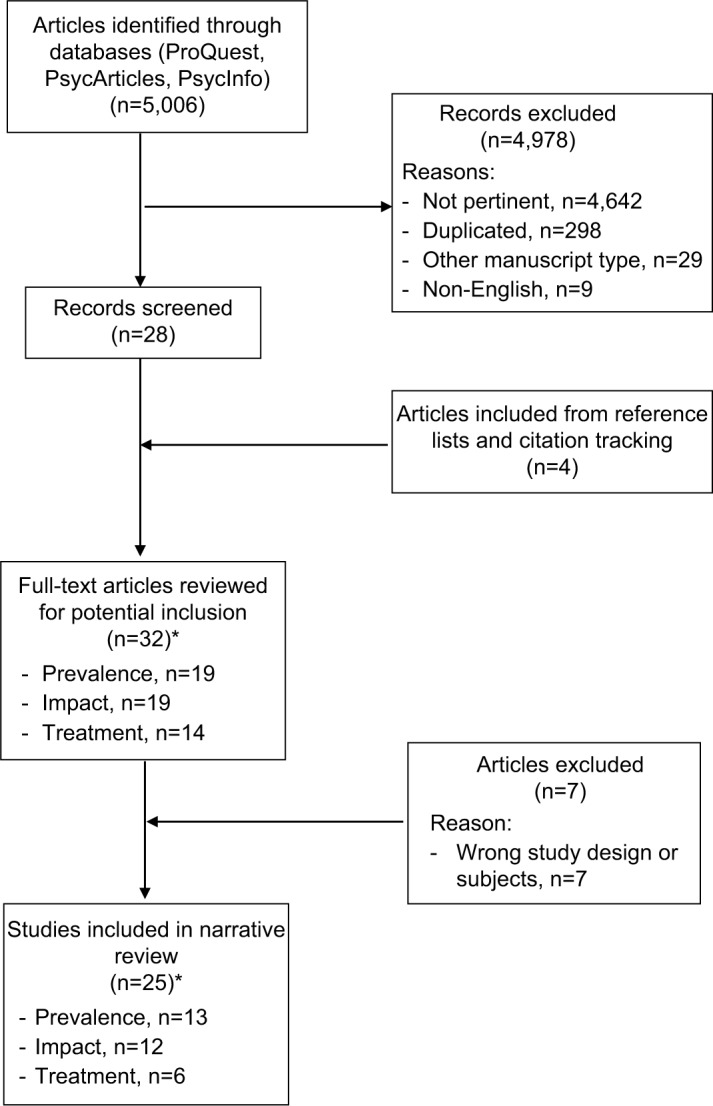A narrative review of binge eating disorder in adolescence: prevalence, impact, and psychological treatment strategies.
IF 1.7
Q2 PEDIATRICS
Adolescent Health Medicine and Therapeutics
Pub Date : 2018-01-05
eCollection Date: 2018-01-01
DOI:10.2147/AHMT.S148050
引用次数: 66
Abstract
Binge eating disorder (BED) represents one of the most problematic clinical conditions among youths. Research has shown that the developmental stage of adolescence is a critical stage for the onset of eating disorders (EDs), with a peak prevalence of BED at the age of 16–17 years. Several studies among adults with BED have underlined that it is associated with a broad spectrum of negative consequences, including higher concern about shape and weight, difficulties in social functioning, and emotional-behavioral problems. This review aimed to examine studies focused on the prevalence of BED in the adolescent population, its impact in terms of physical, social, and psychological outcomes, and possible strategies of psychological intervention. The review of international literature was made on paper material and electronic databases ProQuest, PsycArticles, and PsycInfo, and the Scopus index were used to verify the scientific relevance of the papers. Epidemiological research that examined the prevalence of BED in adolescent samples in accordance with Diagnostic and Statistical Manual of Mental Disorders, 4th Edition showed a prevalence ranging from 1% to 4%. More recently, only a few studies have investigated the prevalence of BED, in accordance with the Diagnostic and Statistical Manual of Disorders, Fifth Edition criteria, reporting a prevalence of ~1%–5%. Studies that focused on the possible impact that BED may have on physical, psychological, and social functioning showed that adolescents with BED have an increased risk of developing various adverse consequences, including obesity, social problems, substance use, suicidality, and other psychological difficulties, especially in the internalizing area. Despite the evidence, to date, reviews on possible and effective psychological treatment for BED among young population are rare and focused primarily on adolescent females.

青春期暴食症的叙述性回顾:患病率、影响和心理治疗策略。
暴食症(BED)是青少年中最具问题的临床状况之一。研究表明,青春期是饮食失调(EDs)发病的关键阶段,16-17岁是饮食失调的高峰期。几项针对患有BED的成年人的研究强调,它与广泛的负面后果有关,包括对身材和体重的高度关注,社会功能障碍以及情绪行为问题。本综述旨在回顾有关青少年BED患病率的研究,其对身体、社会和心理结果的影响,以及可能的心理干预策略。在论文材料和电子数据库ProQuest、PsycArticles和PsycInfo上进行国际文献综述,并使用Scopus索引验证论文的科学相关性。根据《精神疾病诊断与统计手册》第4版,流行病学研究检查了青少年样本中BED的患病率,显示患病率在1%至4%之间。最近,根据《疾病诊断与统计手册》第五版标准,只有少数研究调查了BED的患病率,报告患病率为1%-5%。关注BED对身体、心理和社会功能可能产生的影响的研究表明,患有BED的青少年发生各种不良后果的风险增加,包括肥胖、社会问题、药物使用、自杀和其他心理困难,尤其是在内化方面。尽管有证据,但迄今为止,对年轻人群中BED的可能和有效的心理治疗的评论很少,而且主要集中在青春期女性身上。
本文章由计算机程序翻译,如有差异,请以英文原文为准。
求助全文
约1分钟内获得全文
求助全文
来源期刊

Adolescent Health Medicine and Therapeutics
PEDIATRICS-
自引率
0.00%
发文量
13
审稿时长
16 weeks
期刊介绍:
Adolescent Health, Medicine and Therapeutics is an international, peer reviewed, open access journal focusing on health, pathology, and treatment issues specific to the adolescent age group, including health issues affecting young people with cancer. Original research, reports, editorials, reviews, commentaries and adolescent-focused clinical trial design are welcomed. All aspects of health maintenance, preventative measures, disease treatment interventions, studies investigating the poor outcomes for some treatments in this group of patients, and the challenges when transitioning from adolescent to adult care are addressed within the journal. Practitioners from all disciplines are invited to submit their work as well as health care researchers and patient support groups. Areas covered include: Physical and mental development in the adolescent period, Behavioral issues, Pathologies and treatment interventions specific to this age group, Prevalence and incidence studies, Diet and nutrition, Specific drug handling, efficacy, and safety issues, Drug development programs, Outcome studies, patient satisfaction, compliance, and adherence, Patient and health education programs and studies.
 求助内容:
求助内容: 应助结果提醒方式:
应助结果提醒方式:


